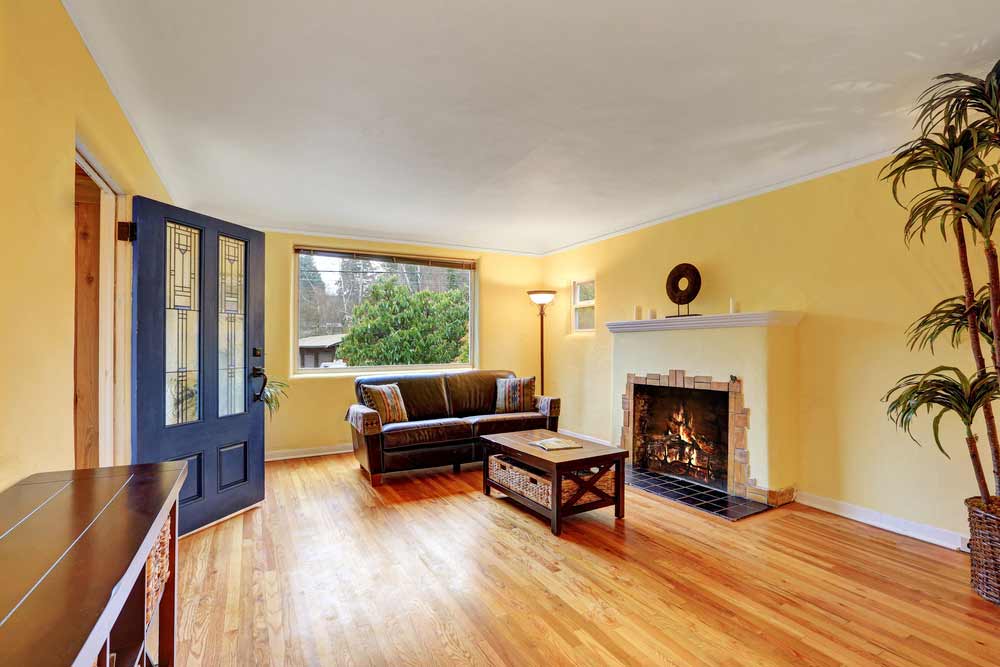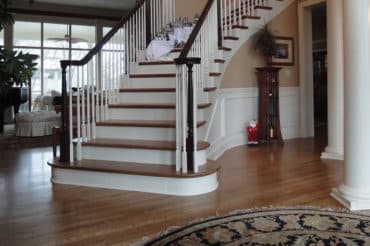
 There are many choices to be made when choosing wood flooring, like what species of wood to use, what stain color, and what size boards. However, many homeowners don’t realize that it’s not only the type of wood that matters, but it’s the also the wood’s quality, or grade, that ultimately determines the finished look of your flooring. To help explain the difference, SVB is breaking down the different types of wood grades and what they mean for your wood flooring.
There are many choices to be made when choosing wood flooring, like what species of wood to use, what stain color, and what size boards. However, many homeowners don’t realize that it’s not only the type of wood that matters, but it’s the also the wood’s quality, or grade, that ultimately determines the finished look of your flooring. To help explain the difference, SVB is breaking down the different types of wood grades and what they mean for your wood flooring.
Related Read: How to Keep Winter Weather From Destroying Your Hardwood Floors
Does Higher Grade Mean Higher Quality?
Your first thought might be that a higher graded wood is better than a lower graded wood, or that it’s somehow stronger or more durable. However, this is a common misconception. The major differences between a #2 Common Hardwood, #1 Common Hardwood, and a Select Grade Hardwood mostly have to do with the wood’s appearance rather than its durability.
Higher graded wood is typically more expensive due to its more uniform appearance, free of knot holes and other unique markings. It’s also important to remember that each variety of wood is different, and so a #1 Common Hardwood rated Hickory floor will not have the same appearance as a #1 Common Hardwood rated Red Oak floor, for example.
#2 Common Hardwood
A #2 Common Hardwood floor is the cheapest by cost and has the most character to them. This isn’t a bad thing, it is simply aesthetic preference. This tends to be less expensive because it is easier to find wood featuring more small knots and striations. Major defects are, of course, not permitted in wood graded at this level, so any “imperfections” are mostly at the cost of a uniform appearance.
Coloring can also vary somewhat at this level, giving floors built with this wood a variety of similar shades. For many new homes, builders use #2 Common graded wood because it is an attractive but cost-effective flooring solution. This is also a common option for homeowners putting down flooring on an entire level of their home.
#1 Common Hardwood
The mid-tier option in terms of both cost and aesthetic appearance, #1 Common Hardwood floors strike a happy medium between uniformity and added character. The wood used within this grade still has striations and small knots, but the coloring is much more uniform, and the striations and knots that do appear are smaller and less frequent. For many people undergoing home remodeling, this is the option they choose, as it does give a more uniform look, and when redoing only part of the home is still cost-effective.
Related Read: Are Wood Floors Environmentally Friendly? The Answer May Surprise You!
Select Grade Hardwood
Select Grade Hardwood flooring is top-of-the-line in terms of both appearance and in terms of cost and comes from the heart of a tree. Because of this, the wood’s sap content is very low, which results in very uniform color, very few knots, and the smoothest finish of any grade wood. Because of its uniform look, it is the most expensive option for home remodeling, but when it’s used it achieves an extremely polished look.





